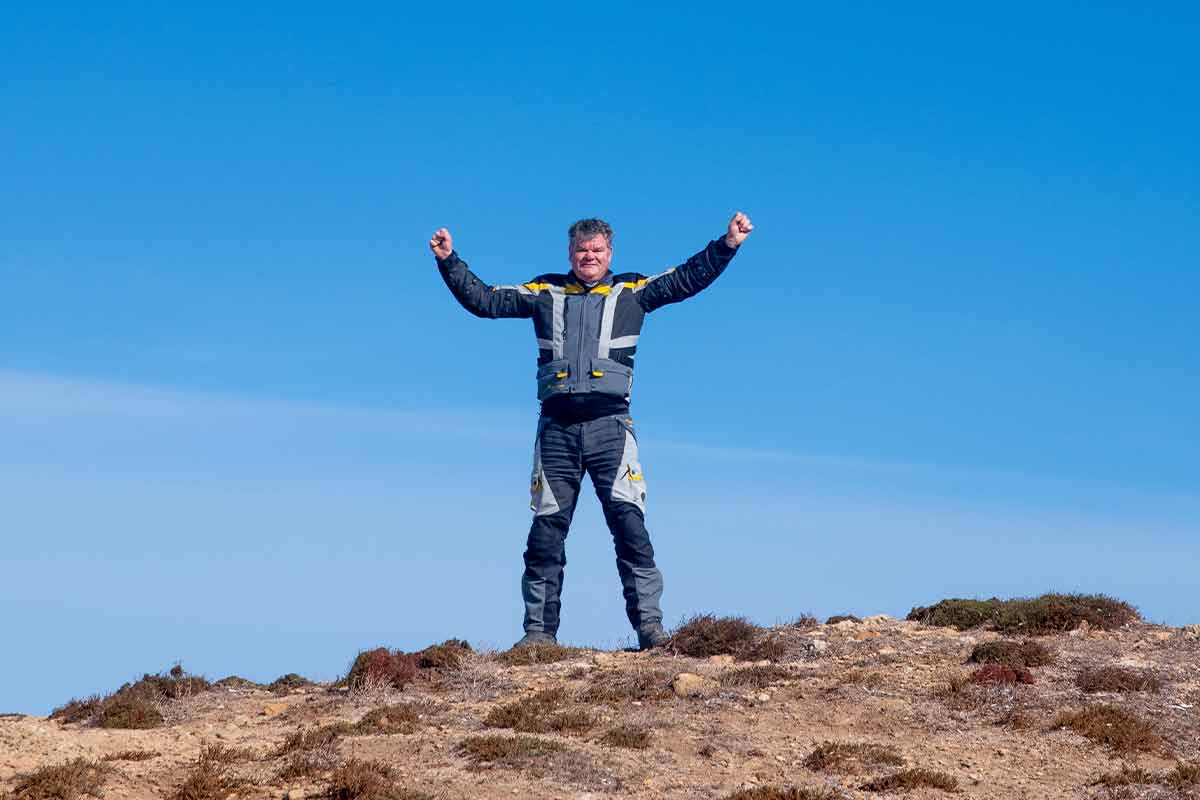Sardinia, the second largest island in the Mediterranean, reveals its beauty and diversity particularly intensely when you explore it in the saddle of an enduro. In October 2023, I set off with my good friend Jürgen on an unforgettable motorbike tour, which was not only characterised by breathtaking landscapes, but also by Sardinia's rich cultural history.
The journey began after a quick transfer, marked by pouring rain, from the Black Forest over the Gotthard Pass to Genoa and then by ferry on to Sardinia. Our first stage took us from Porto Torres, a harbour town in the north-west of the island, to Castelsardo. Once there, the journey took us through the picturesque town's narrow streets and to the historic centre, where the medieval castle Castello dei Doria stands. From there, we travelled on to Oscheri, where the breathtaking landscape around the Monte Limbara radar station awaited us. The abandoned radio base on Monte Limbara not only offered a fascinating sight, but also the opportunity to explore the history of the region. The Monte Limbara radar station, majestically located on the mountain of the same name in the heart of Sardinia, is not only an impressive architectural monument, but also a symbol of the region's military history. Built in the 1950s during the Cold War, this radar station was originally used to monitor the airspace and made a significant contribution to the island's security. The facility, with its distinctive radar domes and antennae, is perched on the summit of Monte Limbara and offers not only a breathtaking panoramic view of the surrounding landscape, but also insights into the strategic importance of Sardinia during the geopolitically turbulent era of the Cold War. Building the radar on this mountain allowed for maximum range and surveillance of the airspace, which was of crucial importance at the time.
Over the years, the Monte Limbara radar station lost its original military function as technology developed and geopolitical conditions changed. Today, the facility stands as a silent testimony to times gone by, embedded in the picturesque Sardinian landscape. Its abandoned buildings and antennae evoke an atmosphere of nostalgia and at the same time raise questions about the island's history and role during the Cold War. Visitors exploring the Monte Limbara radar station not only have the opportunity to understand the technological development of military air surveillance, but also the chance to experience the fascinating nature and history of Sardinia. Monte Limbara itself is surrounded by lush Mediterranean flora and offers many - quite challenging - off-road trails.
Our journey took us on to Monte Pulchiana and finally to Isola Rossa, where we concluded the day with a spectacular sunset over the sea and perhaps the most delicious pizza in Italy.
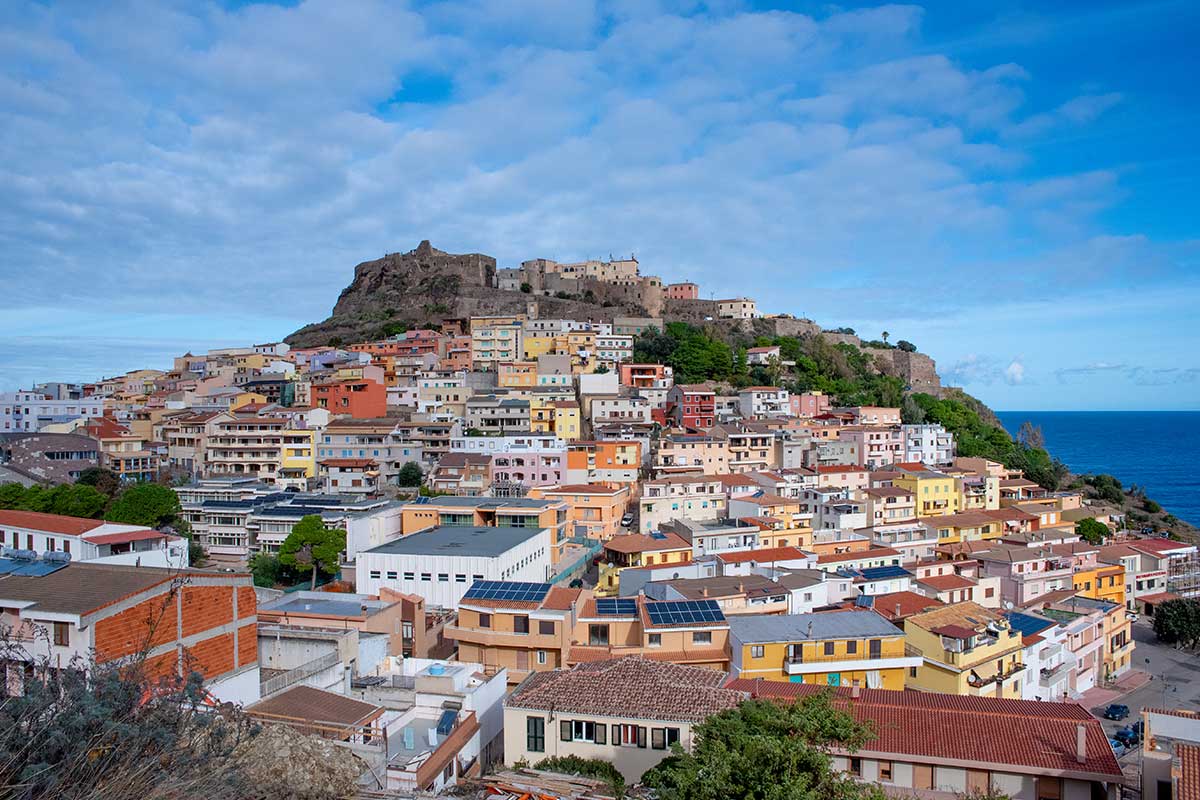
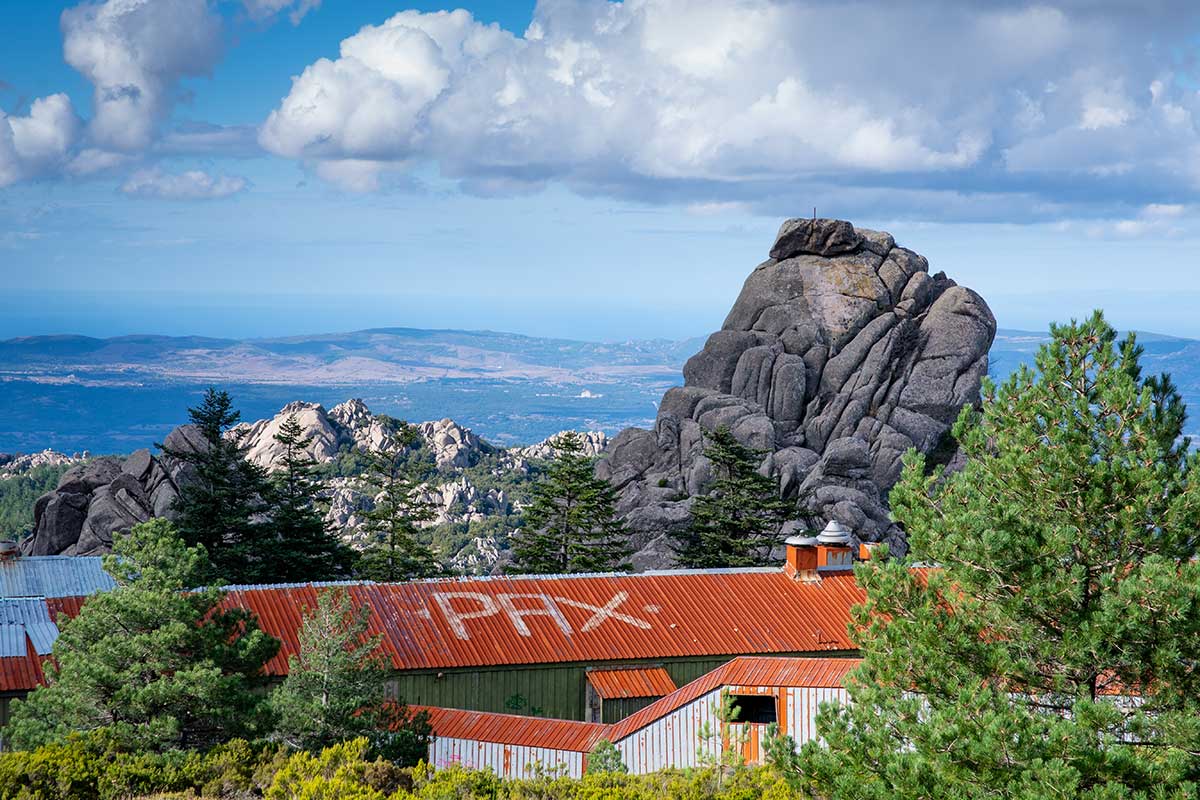
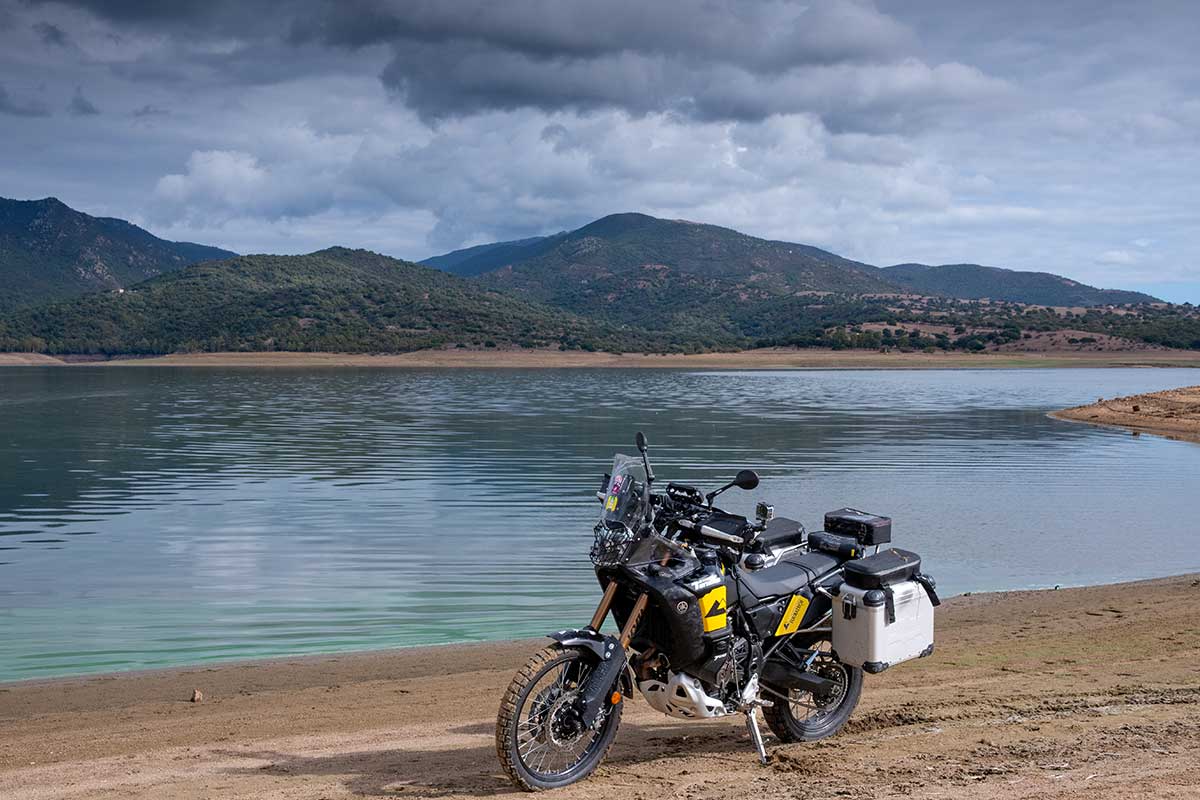
The next morning, we travelled via Vignola Mare and on to Santa Teresa Gallure, a charming coastal town in the north of the island. From there, we started our off-road adventures along the Costa Smeralda, a coastal region known for its crystal-clear waters and luxurious marinas, before reaching Olbia. In the hinterland, we travelled to Posada, a picturesque village with medieval charm, where we spent the night and prepared for the next stages.
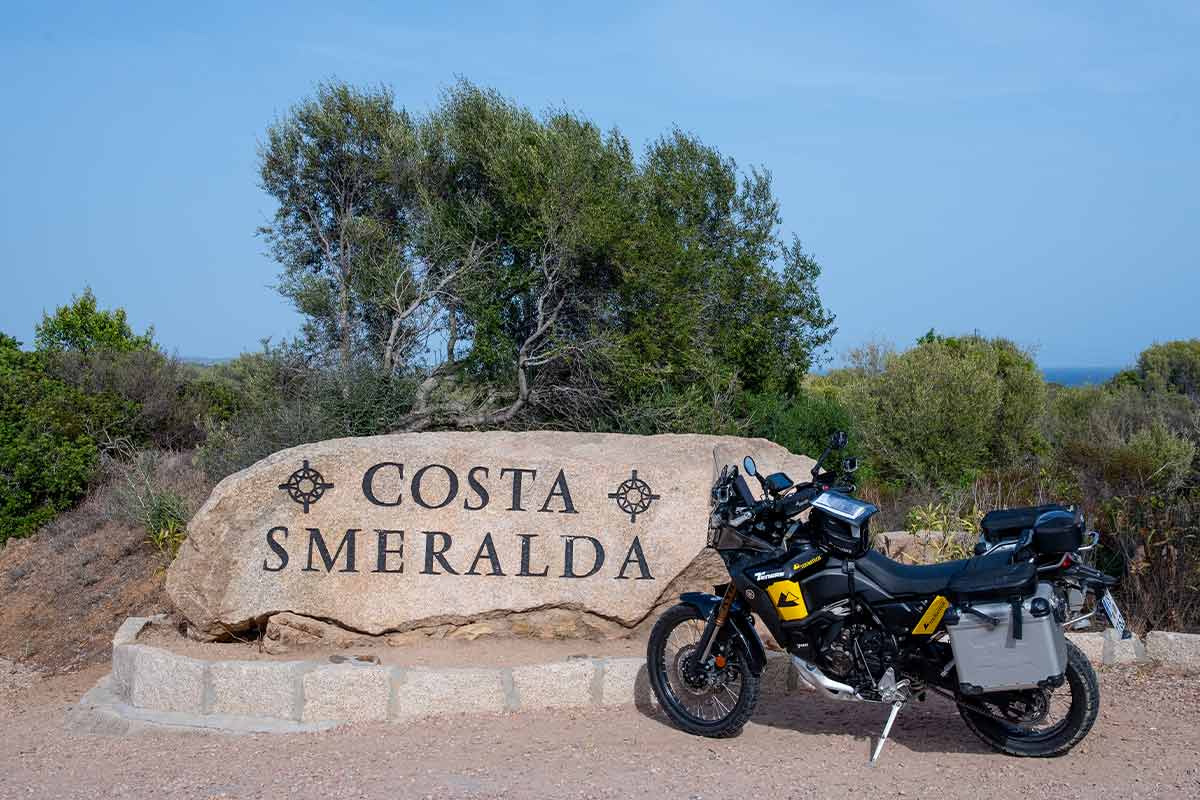
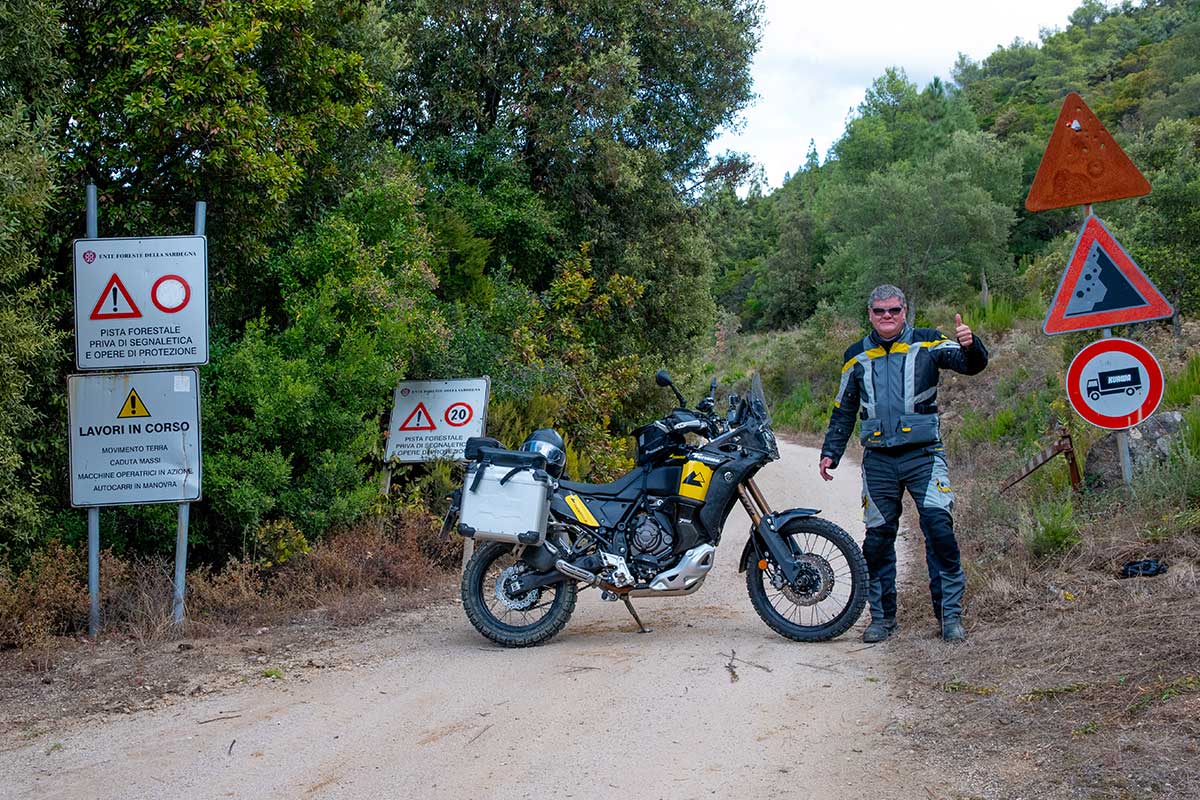
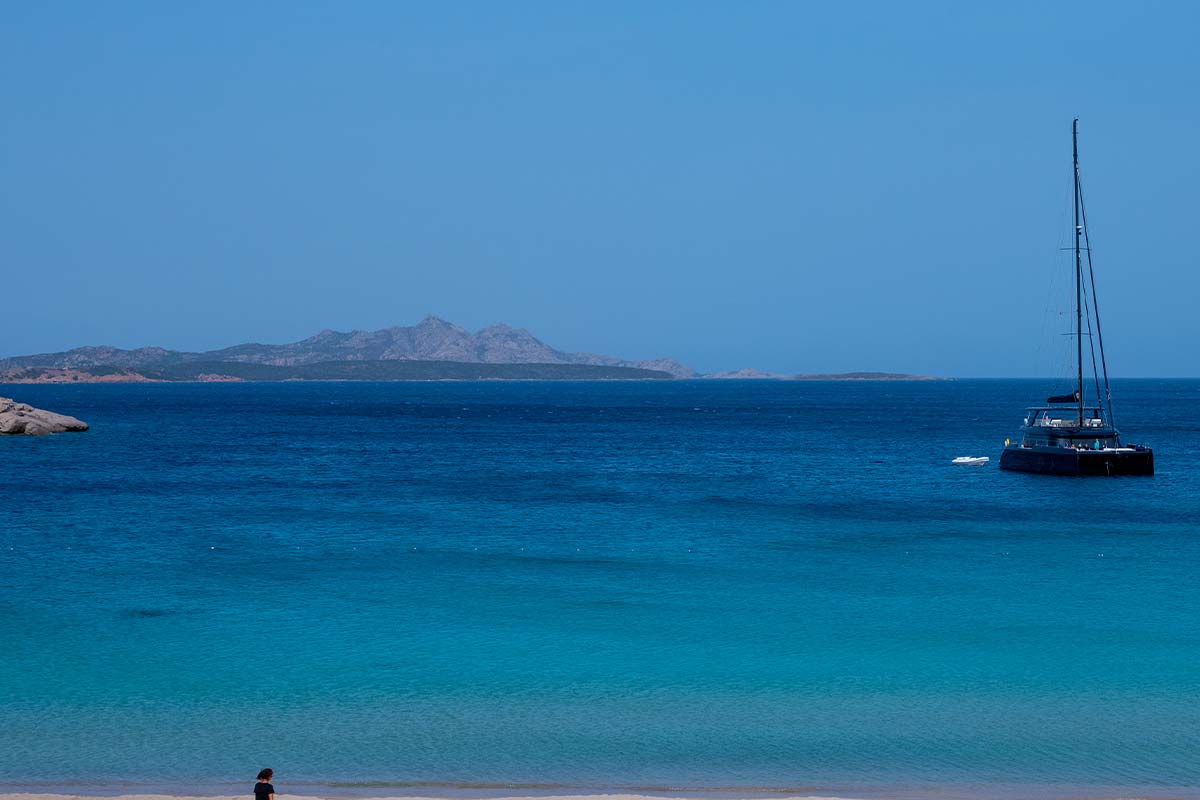
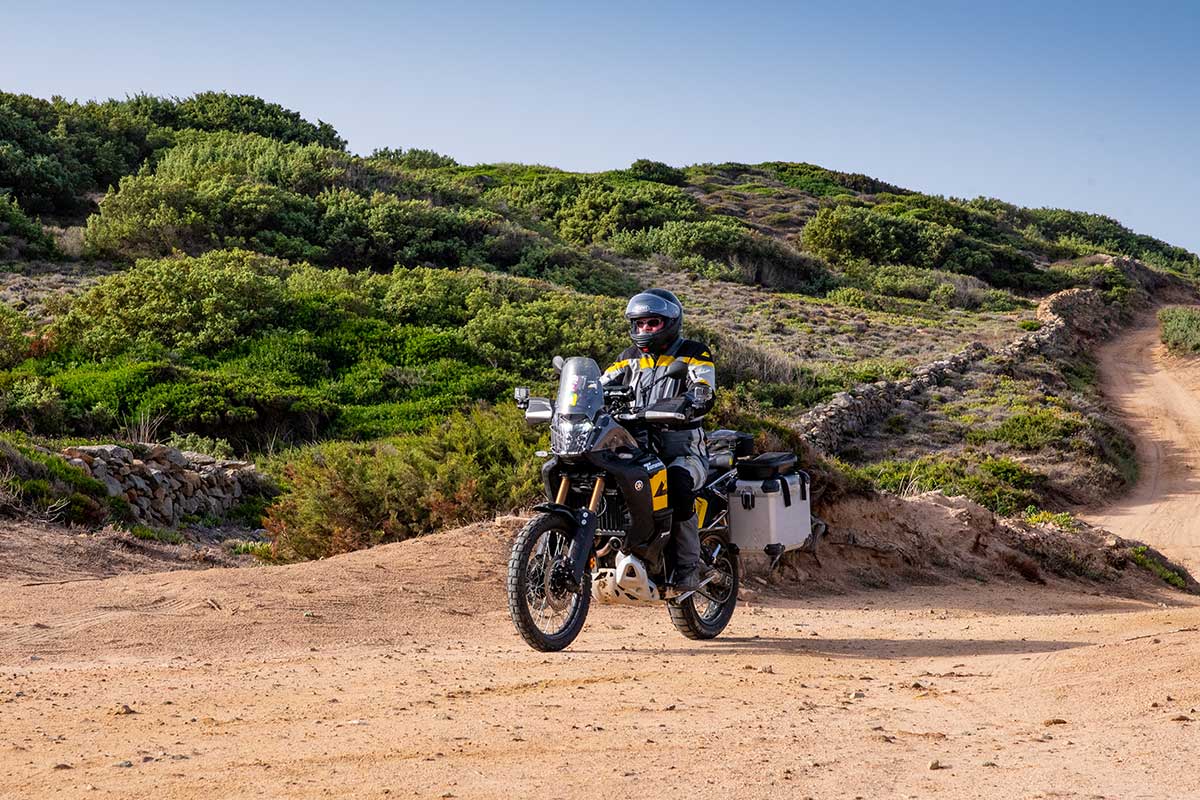
The tour took us through the impressive Monte Albo Baronte mountains to Nuoro, which is considered the cultural heart of Sardinia, and finally to Orgosolo. Here we experienced the village's unique street art. Orgosolo, a picturesque mountain village in the heart of Sardinia, attracts visitors with its unique charm and fascinating history. The narrow streets are lined with traditional historic stone houses with characteristic stone walls, giving the town a timeless atmosphere. But Orgosolo is not only known for its picturesque backdrop. It has also earned a reputation as the centre of the Sardinian resistance movement and for its impressive street art scene. Orgosolo's roots reach deep into the island's history. The town exudes authenticity and offers an insight into rural life in Sardinia.
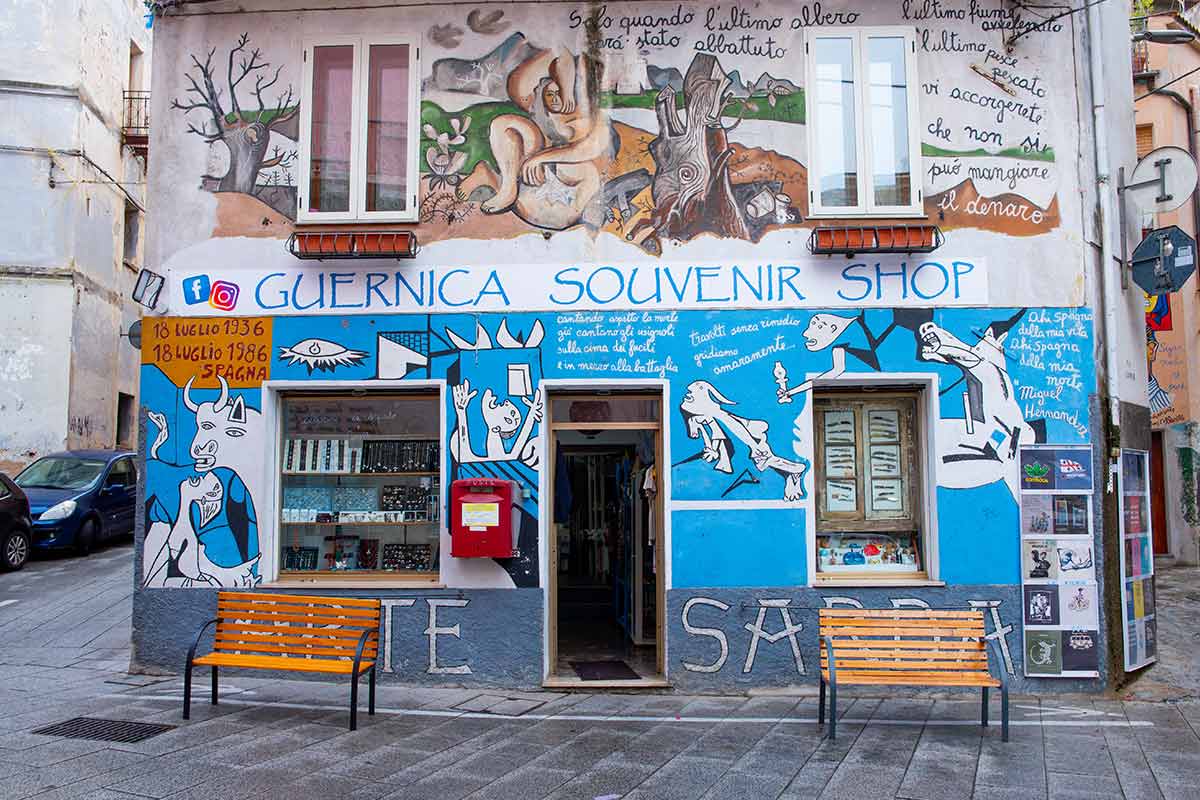
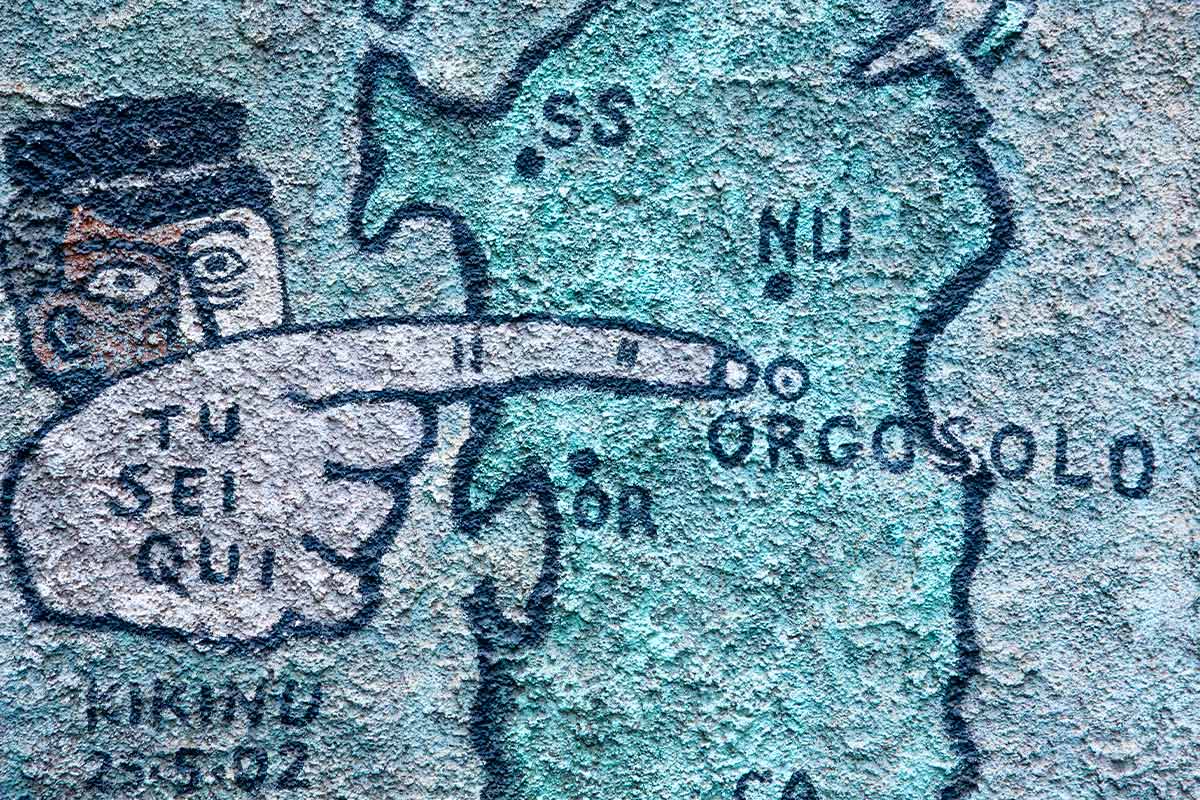
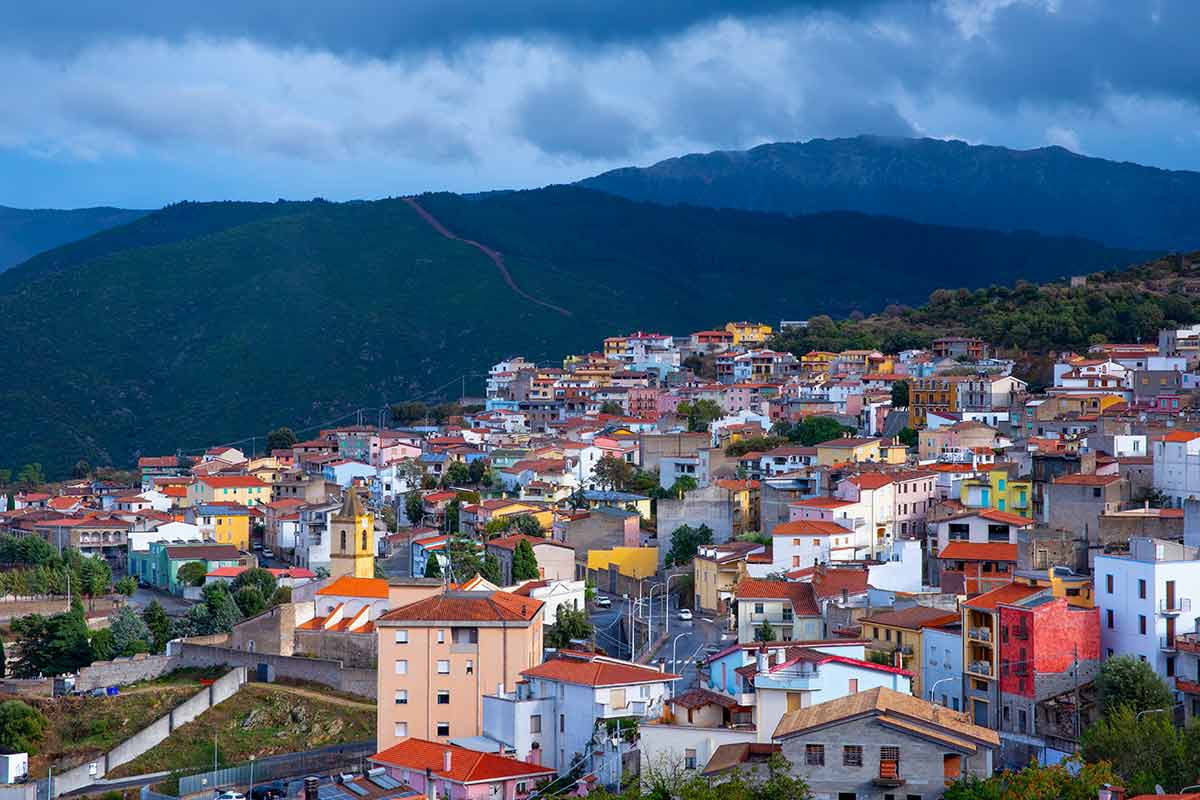
However, the real speciality of Orgosolo lies in its cultural and political history. During the 1960s and 1970s, the village was a centre of social unrest and political activism. This period of unrest found expression in the impressive murals that adorn the walls of Orgosolo. This street art, often of political and social nature, tells of the struggles and dreams of the inhabitants and gives Orgosolo a unique, quickly rebellious character. A visit to Orgosolo is therefore not only an opportunity to experience the traditional Sardinian way of life, but also to immerse yourself in the living history and art of the region. The murals that still adorn the façades today are a visual journey through the past and make Orgosolo a cultural jewel in the midst of the Sardinian mountains.
You could probably spend several days in Orgosolo - and you still haven't seen everything worth exploring. You should at least drive along the Corso Repubblica and look at the painted houses. Helmut Schmidt is immortalised at the Ziu Mesina bar (number 88). Here you will not only find very tasty espresso - but also a history of German terror from the times of the RAF.
The route from Orgosolo to Lanusei took us through picturesque landscapes, including Fonni and the idyllic Lago di Gusana. Despite the inclement weather, we enjoyed the ride to Belvi and Seulo, two charming villages with their own history.
On this section of the route, we repeatedly pass the railway line to Tonara. In Sardinia, the railway is more than just a means of transport. It is a fascinating way to immerse yourself in the history and beauty of the island. The route takes you through picturesque landscapes, from olive groves to rolling hills, giving you the feeling of travelling back in time. The train journey to Tonara, nestled in the Sardinian countryside, offers not only breathtaking views but also an insight into the rural way of life in the region. It is a journey that combines past and present, while the rhythmic clatter of the rails sings the melody of an unforgettable journey through the heart of Sardinia. The winding SP8 provincial road, which runs almost exactly alongside this railway line, is a thrill of curves for any motorbike enthusiast. Unfortunately, it keeps raining - there are leaves on the road and the weather conditions are anything but pleasant.
The day ended in Lanusei, where we recovered from the rain, wind and cold. Yes - in October, the Mediterranean island of Sardinia is both famous and infamous for its capricious weather.
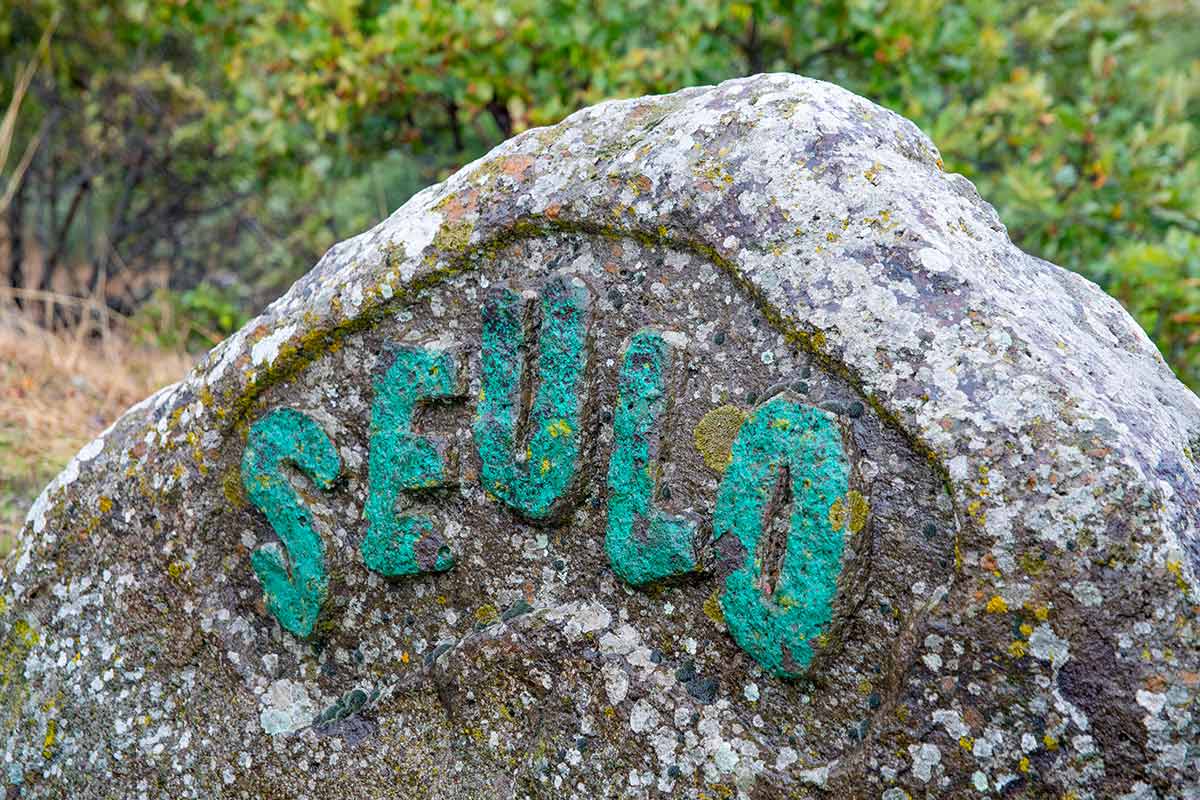
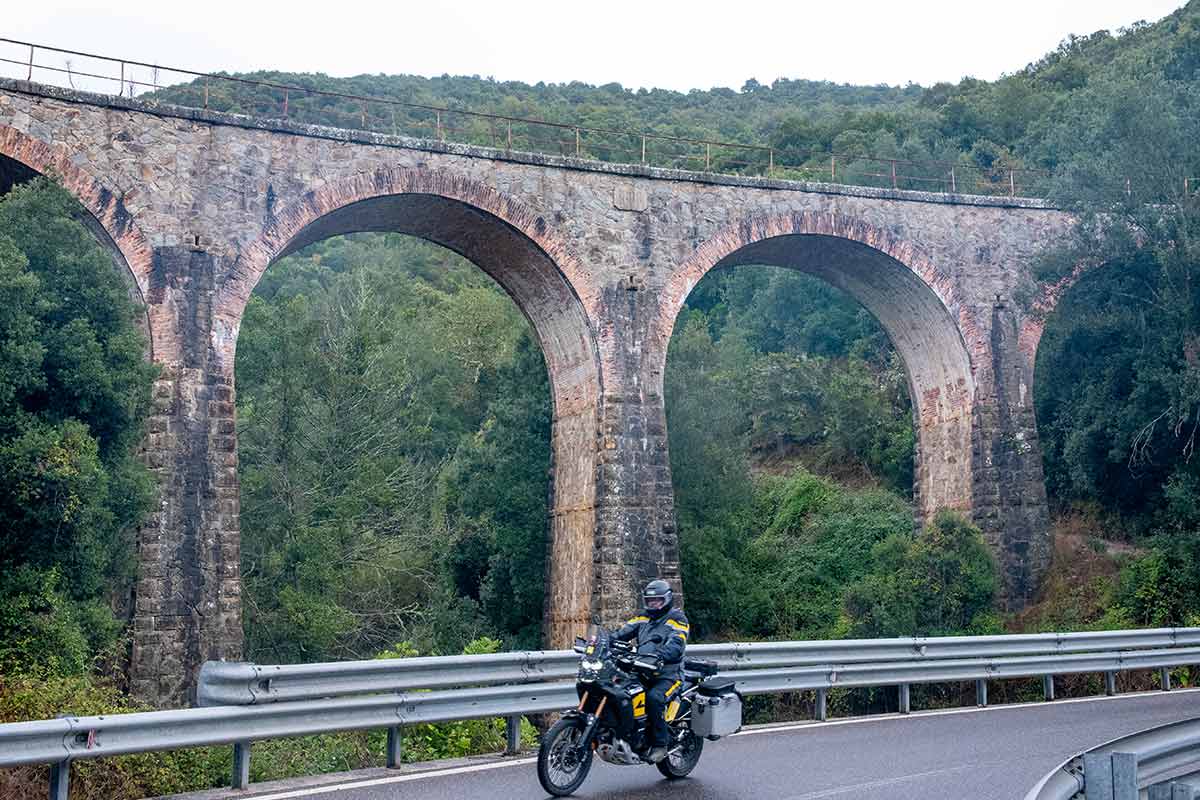
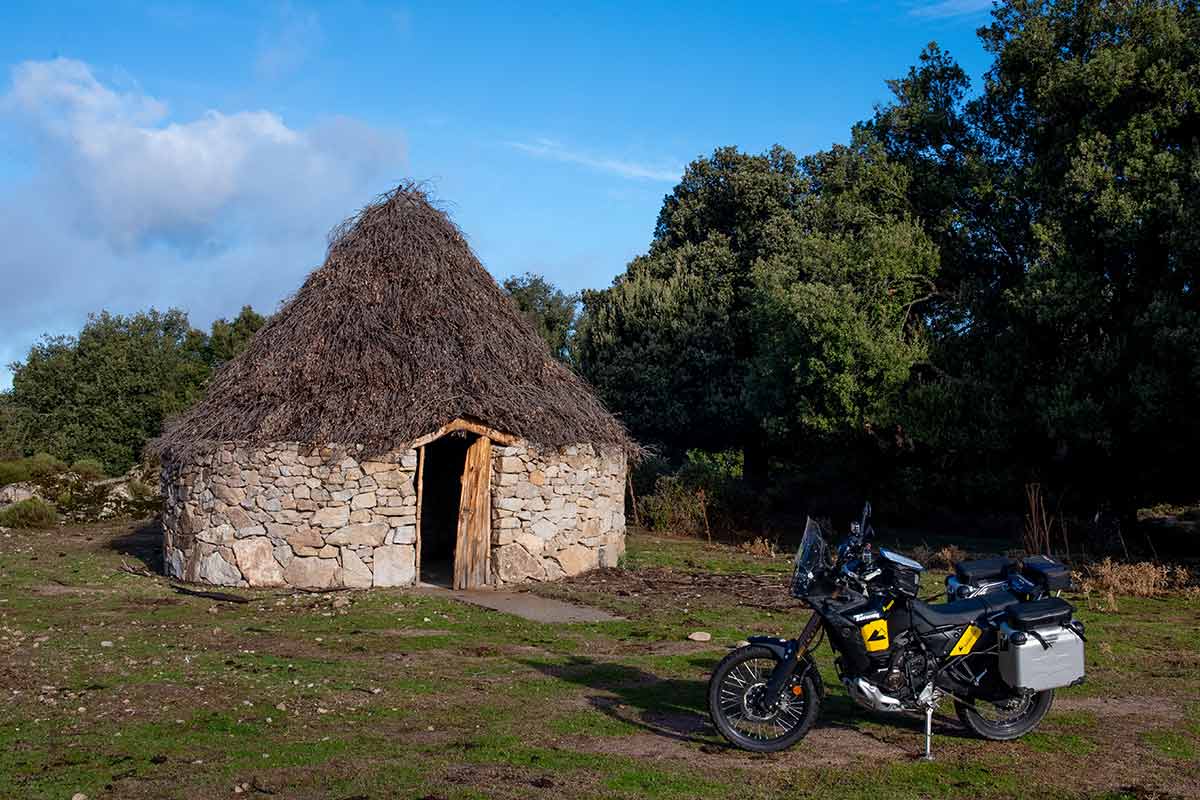
From Lanusei, we continued our journey to Gairo Vecchio and Perdasdefogu. The name Gairo is made up of the two Greek words "ga" and "roa", which means "flowing earth". After a six-day storm that raged in and over Sardinia in the 1950s, the names became reality. The rain triggered such a huge mudslide that half the village was buried under it. After this event, the inhabitants decided to leave the village and rebuild it in a new location. The result was the ghost town of Gairo Vecchio, which still attracts and mesmerises many visitors today.
Perdasdefogu, a picturesque village in the rolling hills of Sardinia, carries a deep emotional history within its stone walls. The narrow streets tell of past generations, while the charming houses whisper stories of community and tradition. But Perdasdefogu is more than just history; it is a place that conveys a sense of belonging and cohesion. Here, time still seems to stand still, while the inhabitants cherish their roots and preserve the beauty of Sardinian culture. Perdasdefogu, a seemingly ordinary village in the remote mountains of Sardinia, harbours an extraordinary secret: it is the "village of centenarians", a Guinness Book record holder. The beautiful journey along narrow, winding roads leads to a place characterised by its pre-Romanesque church, a central square and small shops. The unassuming Piazza Longevità (Square of Long Life) is a reminder of the pensioners who have lived through all the ups and downs of Italian history. The village is proud of its inhabitants, whose black and white photos, with their names and year of birth, adorn the pastel-coloured facades of the houses. Perdasdefogu is not just a village - it is a living testimony to the long and fulfilling lives of its people.
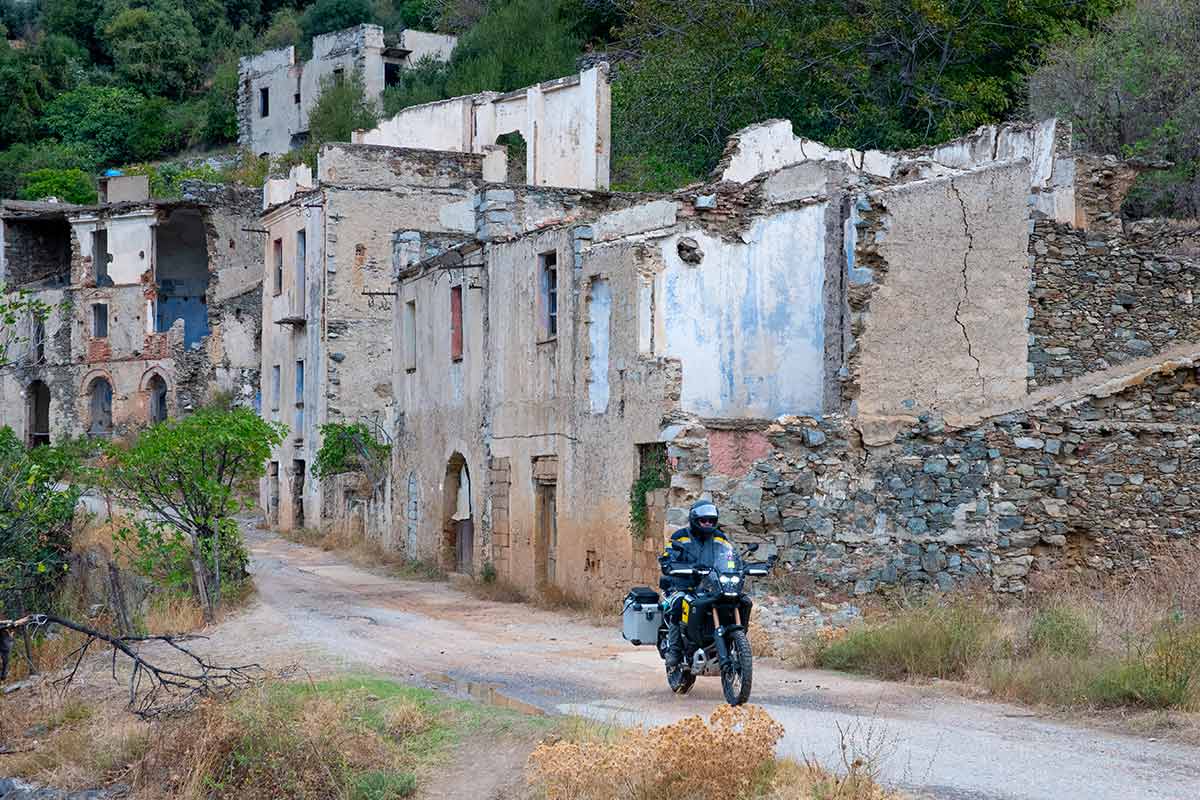
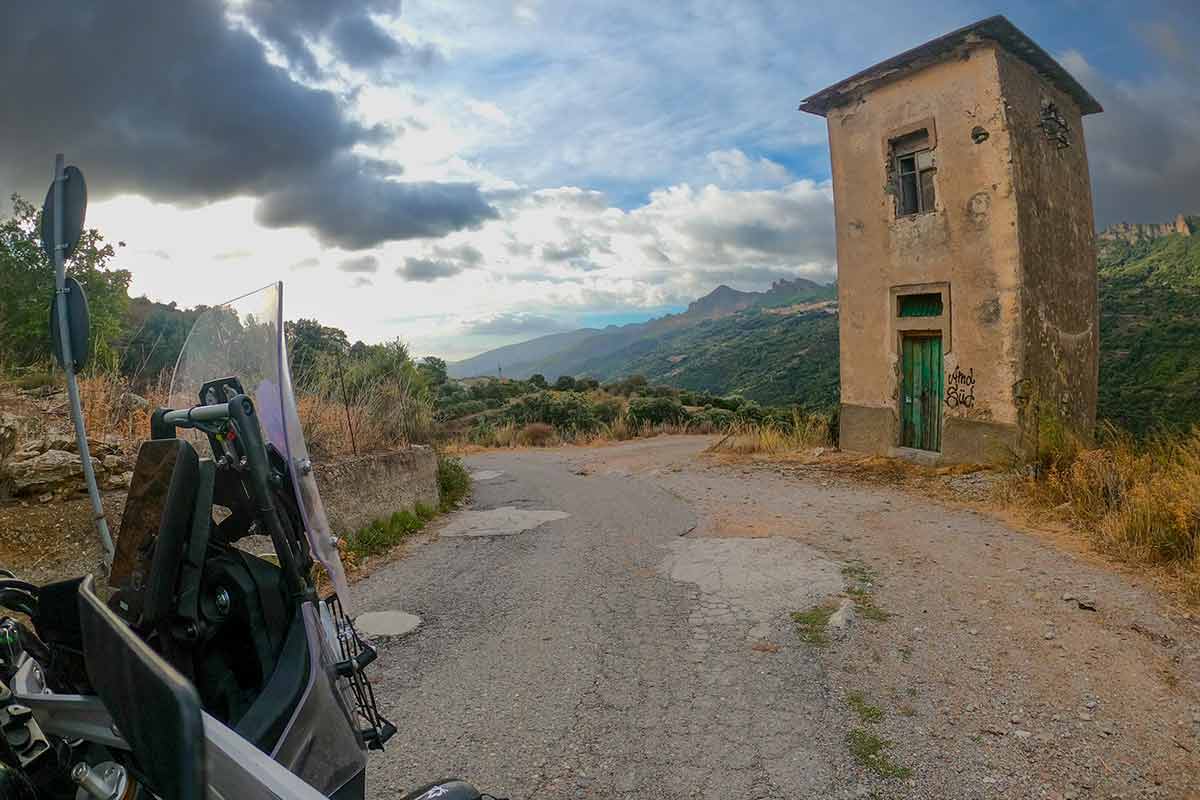
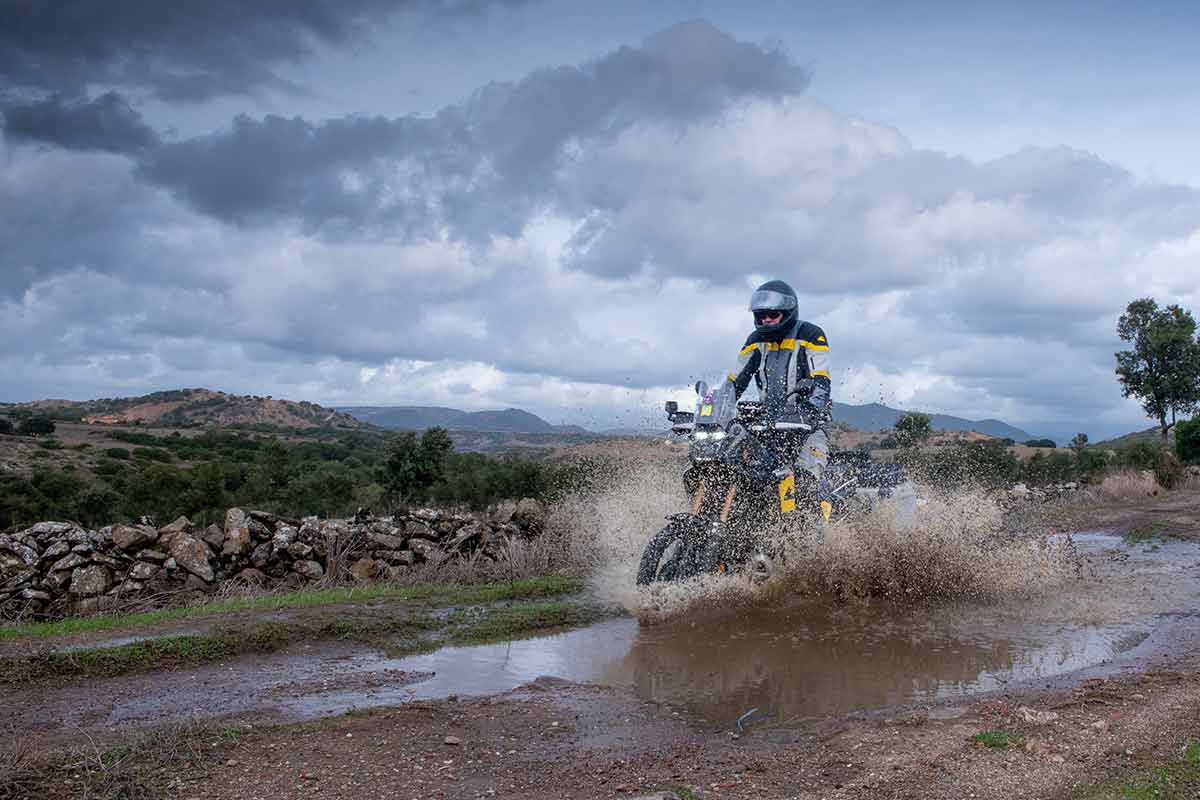
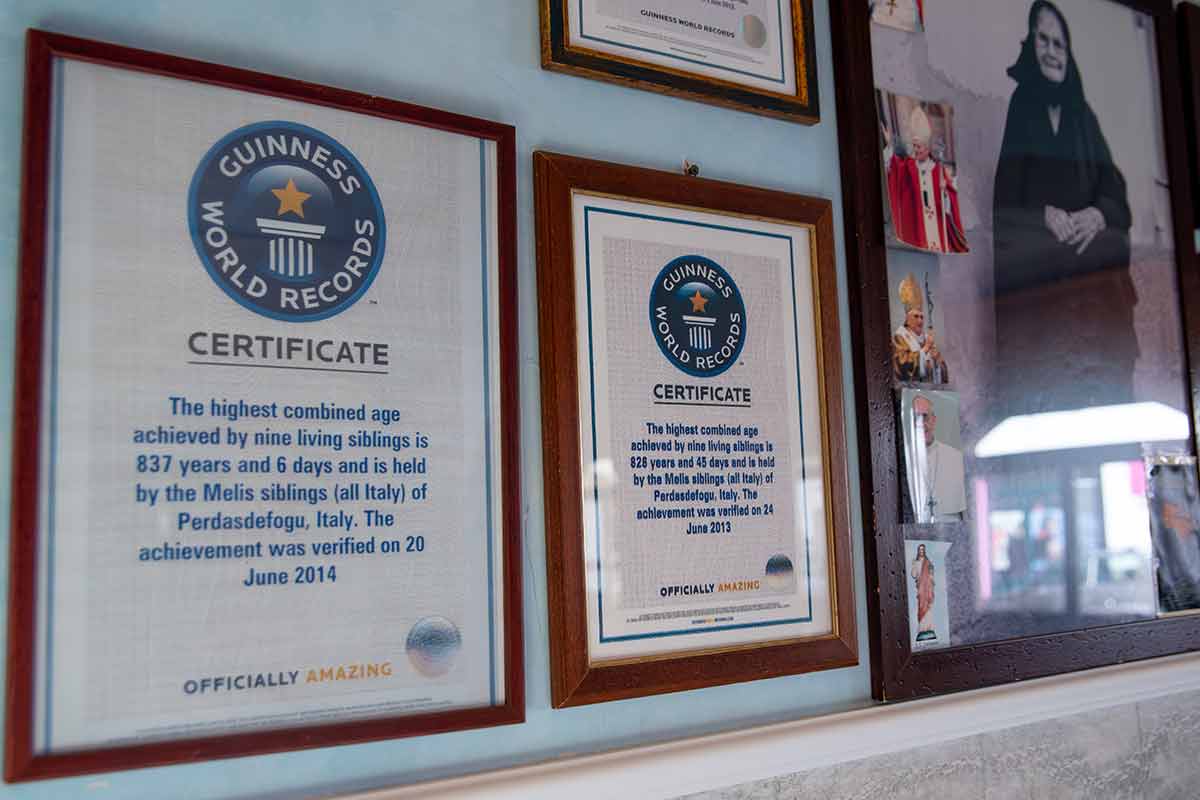
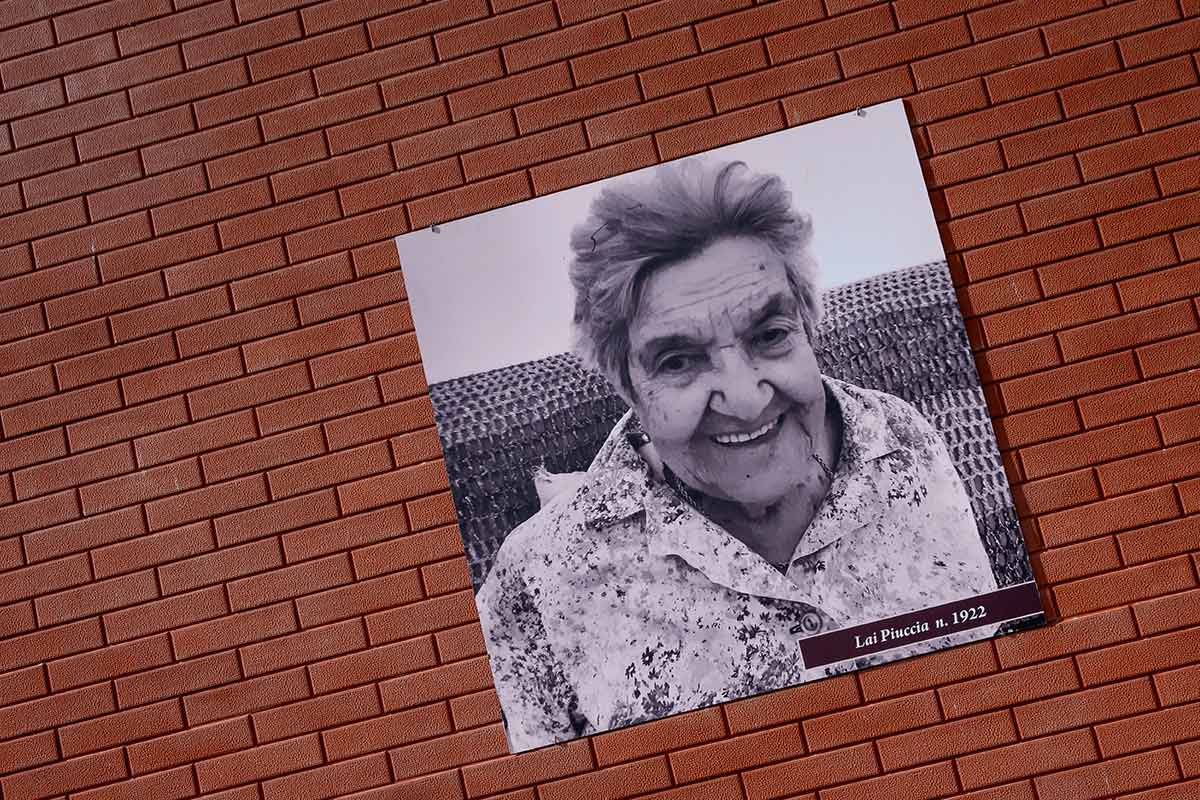

The stage eventually ended in Oristano, a town with Roman roots, where we prepared for the last leg of our tour.
The off-road adventures continued as we travelled from Oristano along the coast to Putzu Idu. Along the way we passed picturesque villages such as Seneghe, Santu Lussurgiu, Cuglieri and Magomadas before finally arriving in Bosa Marina. The breathtaking coastal views and the adrenaline of the off-road tracks made this day an unforgettable part of our journey.
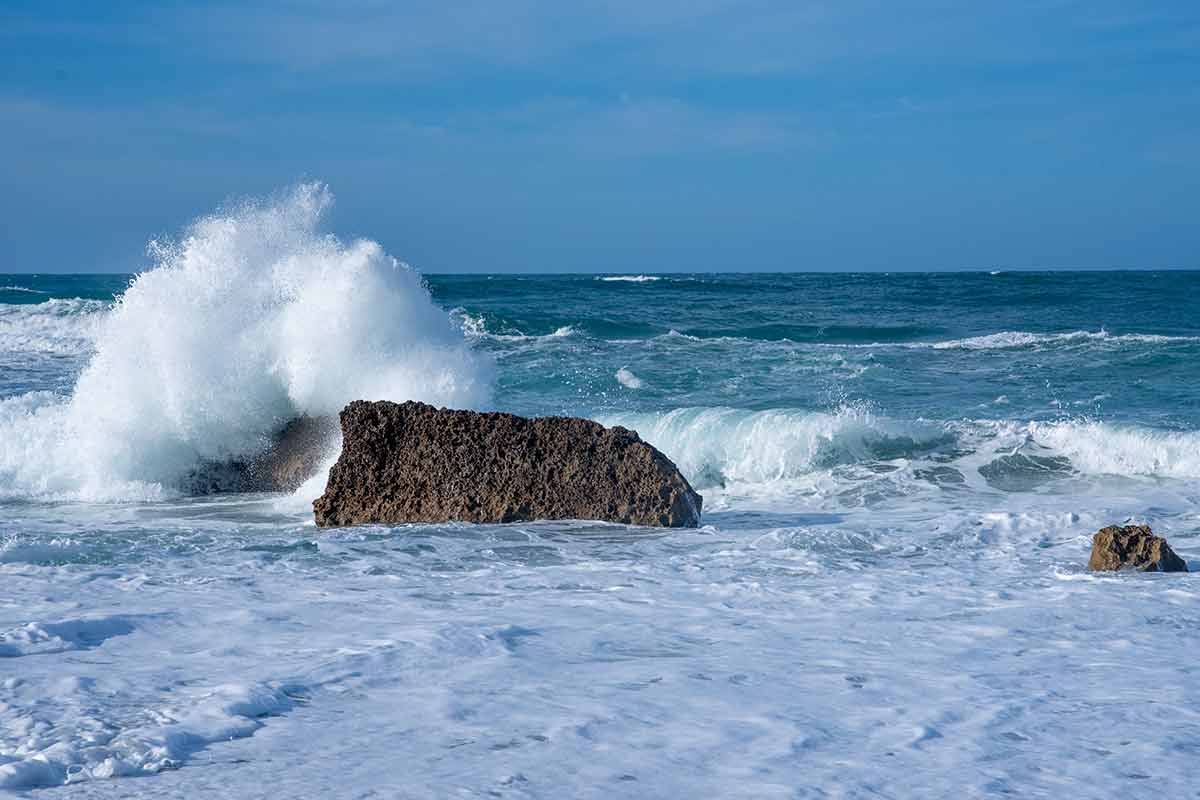
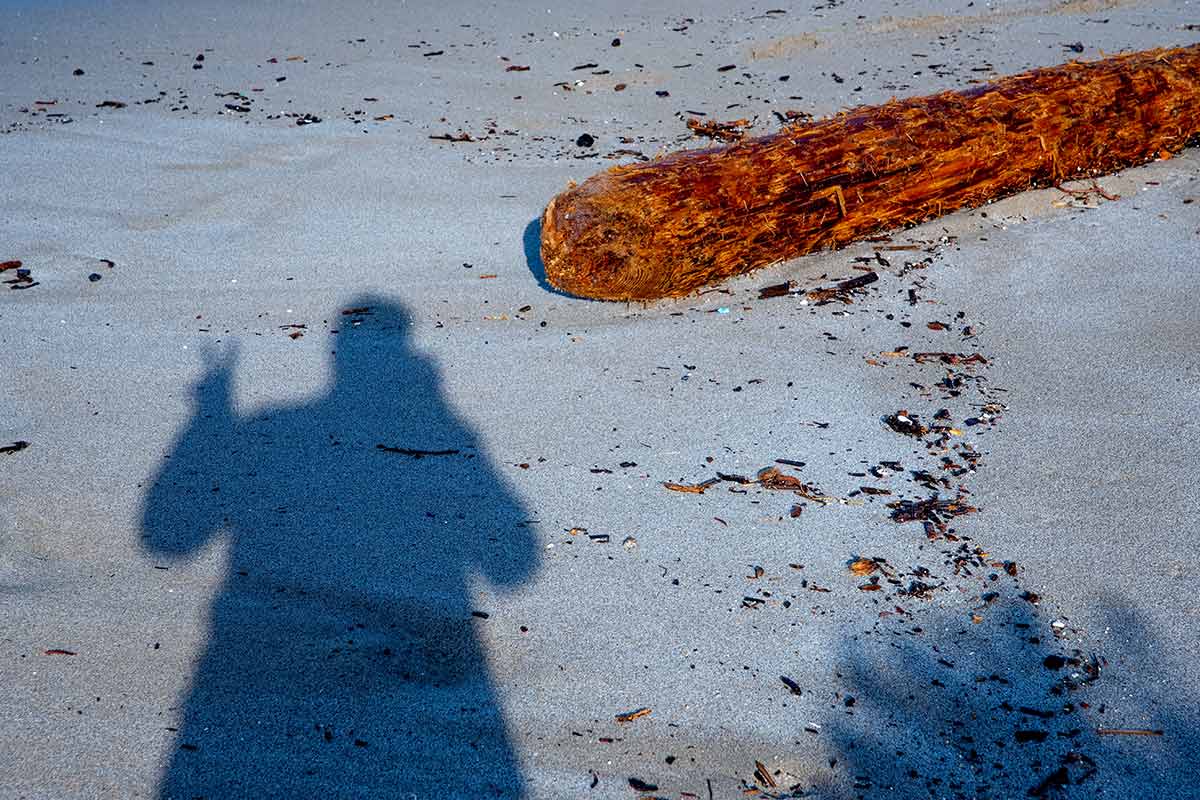
The last stage from Bosa Marina back to Porto Torres gave us time to reflect on the impressions of the previous days. The colourful houses, narrow streets and historic atmosphere of this charming town rounded off our trip perfectly. Sardinia, with its contrasting landscapes, the warm hospitality of its people and a history engraved in the stones of the old villages, left an indelible impression on our hearts.
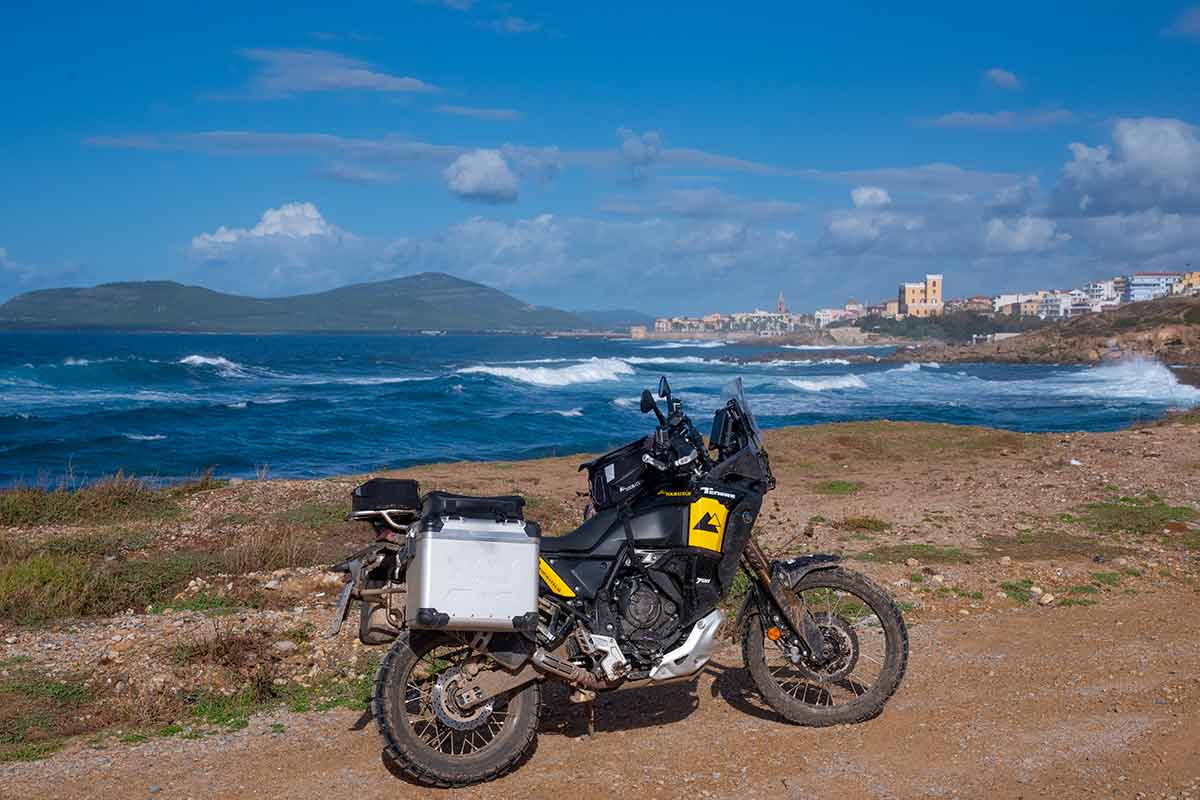
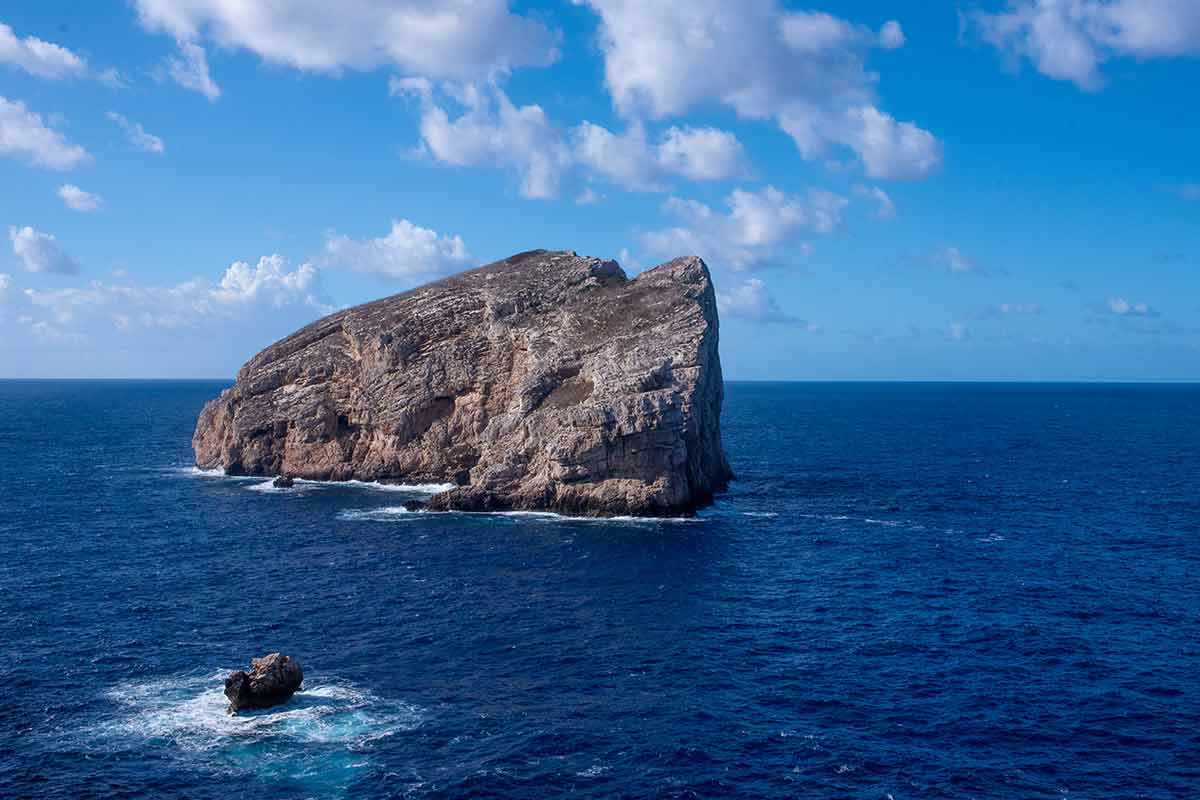
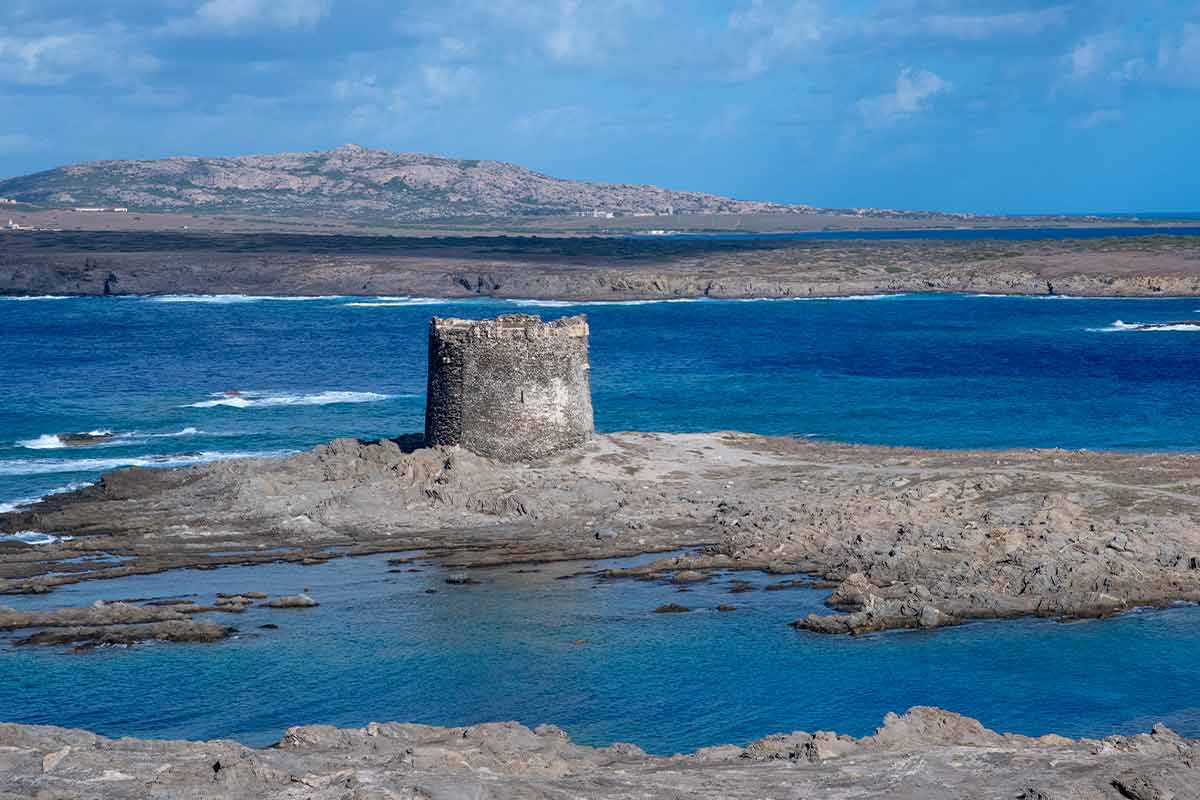
This motorbike tour was not only an adventure on two wheels, but also a journey through the soul of Sardinia - a journey that took us deeper into the beauty and authenticity of this unique island. From the majestic mountains to the picturesque coastlines, every bend in the road was another chapter in this captivating book of discovery. The history of Sardinia extends far beyond the roads and comes alive in the ancient ruins, vibrant towns and traditions of the people. Travelling through time and nature on two wheels, we experienced not only the freedom on the road, but also the deep connection with the history and culture of this unique corner of the Mediterranean.
This was my third off-road trip to Sardinia. And one thing is certain - I will be back. Off-road motorcycling is pure happiness and freedom. The indescribable joy of roaring along unknown paths, the rattling of the engine, the wind in your face - it's an intense adventure. Every hill, every mountain, every water crossing and every obstacle is a challenge that not only strengthens the body but also boosts self-confidence. Off-road riding is more than just a passion; it is an emotional expression of freedom and unbridled joie de vivre.












